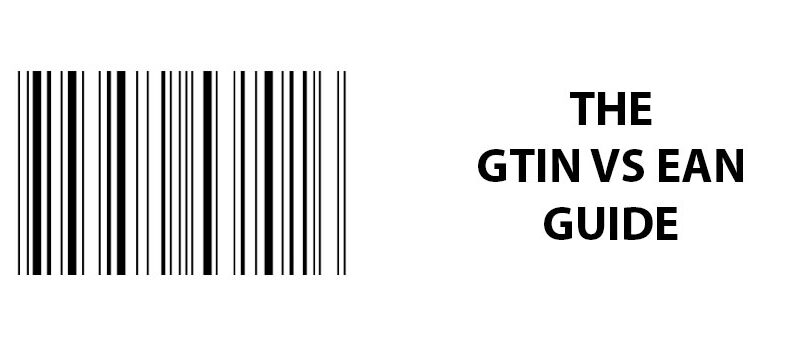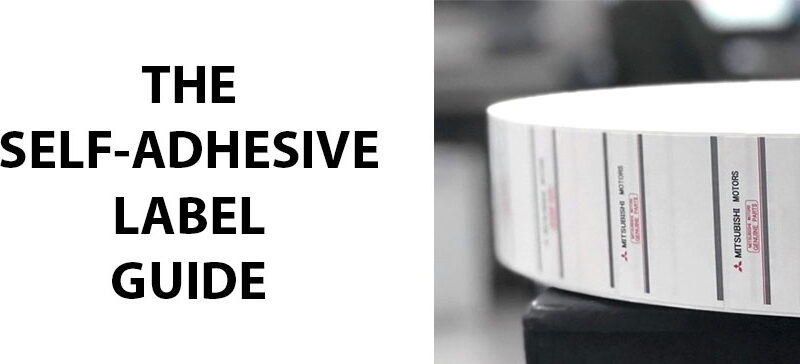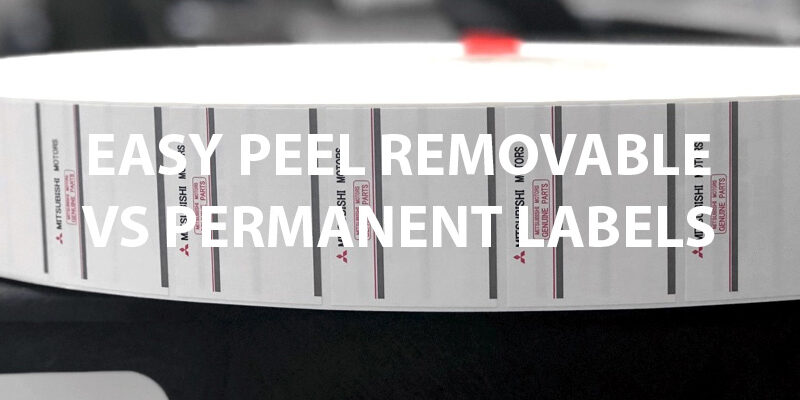If you’re looking to sell your products internationally, you’re probably wondering how GTIN vs EAN compare. Both are formats used in global commerce to identify products and track them through the supply chain. But which one do you need to label your products?
We’ve put together this guide to teach you everything you need to know about EAN vs GTIN. We’ll discuss the different types, how they’re similar and different, and when to use each one.
What Is GTIN?
GTIN, which stands for Global Trade Item Number, is a unique identifier used to track and trace trade items through the supply chain. GTINs are used globally to ensure that products can be recognized and tracked across different systems and locations. Most commonly, GTINs are seen in barcodes on retail products.
GTIN is managed by GS1, an international organization that sets standards for identifying products, services, and locations. In order to receive a GTIN, all you have to do is apply through GS1 or an authorized vendor.
Types of GTIN
There are several types of GTIN, each of which is used for different purposes across different regions.
- GTIN-8: GTIN-8 is an 8 digit code meant to be used on small products with limited space. GTIN-8 is interchangeable with EAN-8.
- GTIN-12: GTIN-12 is a 12 digit code that is interchangeable with UPC-A. This format is mostly used in the United States and Canada.
- GTIN-13: GTIN-13 is a 13 digit code that is interchangeable with EAN-13. This code is more commonly used outside of North America.
- GTIN-14: GTIN-14 is a 14 digit code that is used exclusively with bulk items, such as on a pallet or case of products.
These various formats allow for flexible identification and tracking of different product and packaging types. This helps with efficient management and tracking in global supply chains.
What Is EAN?
EAN, which stands for European Article Number, is a standard for barcodes that is used globally to identify products. It’s used widely in retail and supply chain management. While EAN originated in Europe, it’s also used in other regions across the world.
EANs are used to uniquely identify products, making it easier to track them in retail systems, supply chains, and inventory management. EAN is part of the broader GS1 system, which standardizes product identification across the globe.
Types of EAN
There are two types of EAN: EAN-13 and EAN-8, each used for different purposes.
- EAN-13: EAN-13 is the main type of EAN used. This format consists of a 13-digit number that includes a country prefix, manufacturer code, product code, and a check digit. It’s used on most retail products worldwide, especially in Europe.
- EAN-9: EAN-8 is a shorter version of the EAN-13. It’s used for smaller items with limited barcode space, such as candy or small electronic components. It includes a country prefix, product code, and check digit.
Differences Between GTIN and EAN
When it comes to GTIN vs EAN, both share a lot in common. The differences are in their specific functions. Here’s a breakdown of how EAN vs GTIN are different from one another:
- Scope:
- GTIN is a global standard identifier for trade items that includes various formats.
- EAN is a subset of GTIN that is specifically used for retail products in Europe and other international markets.
- Format:
- GTIN is available in different formats, including GTIN-8, GTIN-12, GTIN-13, and GTIN-14.
- EAN comes in two formats–EAN-8 and EAN-13. These formats are interchangeable with GTIN-8 and GTIN-13.
- Location:
- GTIN is used globally and is an overarching system that standardizes product identification worldwide.
- EAN was originally developed for Europe. When used worldwide, EAN formats are referred to as GTIN-13 or GTIN-8.
- Application:
- GTIN is used in various industries for multiple packaging levels.
- EAN is mostly used for retail products.
How They’re Similar
When comparing GTIN vs EAN, it’s easy to see how much the two have in common. Here is a comparison of how EAN vs GTIN are similar:
- Purpose: Both EAN and GTIN are used to uniquely identify products in the supply chain. They help ensure that each product can be tracked, managed, and sold across a variety of platforms and regions
- Global standardization: Both GTIN and EAN are part of the GS1 system. This means that they follow the same basic rules and structures for global compatibility.
- Barcodes: Both GTIN and EAN can be represented in barcode formats so they can be scanned and read by point-of-sale systems, inventory systems, and other automated data collection tools.
- Numeric format: Both GTIN and EAN use numeric codes to represent the product information.
- Global usage: While EAN originated in Europe, it is now used globally, just like GTIN.
- Compatibility: EANs are fully compatible with the GTIN system.
- Check digit: Both GTIN and EAN include a check digit at the end of the code. This is used to verify that the number has been correctly composed. It also helps prevent errors in data entry or scanning.
- Adaptability: Both GTIN and EAN can be encoded in 1D barcodes or 2D barcodes, such as QR Codes or Data Matrix.
When to Use GTIN
When considering GTIN vs EAN, you’ll want to consider the context and purpose of your business before deciding which to use. GTINs should be used in a variety of circumstances, including:
- Selling retail products: GTINs are commonly used on products sold in retail stores across the globe. The specific format to use will depend on your target market.
- Selling products online: Marketplaces like Amazon, eBay, or Walmart usually require a GTIN to list products.
- Exporting goods internationally: Using a GTIN is crucial for customs, logistics, and retail partners in other countries.
- Managing inventory and supply chains: GTINs are essential for tracking products. GTIN-14 is often used for cases, pallets, or other packaging configurations.
- Identifying packaging hierarchies: When you need to identify different levels of product packaging, GTINs are used to ensure each level is uniquely identifiable.
- Tracking product variants: If you sell products with different variants, such as size, color, or flavor, you’ll need a unique GTIN for each variant.
When to Use EAN
While EANs are most commonly used in European markets, there are some other factors to consider. Here are some scenarios when you should use EAN:
- Selling products in Europe: If your products are being sold in Europe, using EAN-13 or EAN-8 for smaller products is essential.
- Selling products online: If you’re using a marketplace that caters to European and global customers, you may want to use an EAN. Check the requirements of the marketplace to ensure you use the right one.
- Compliance with European standards: If you’re required to comply with European regulatory standards, using an EAN is necessary.
When Not to Use GTIN
Although GTINs are important for uniquely identifying products, they may not always be necessary. Here are some situations when you should not use GTIN:
- Custom or unique items: If you’re selling custom-made, one-of-a-kind products, such as handcrafted items or bespoke furniture, a GTIN probably won’t be required.
- Internal use only: If your product is for internal use within your organization and not for sale to customers, you probably don’t need a GTIN.
- Digital products: GTINs are designed for physical products. If you’re selling digital products like software, e-books, or online courses, you don’t need to obtain a GTIN.
When Not to Use EAN
When considering EAN vs GTIN, there are specific scenarios where an EAN won’t be the right choice, such as:
- Products only sold in North America: If your products are only sold in North America, especially in the US and Canada, you’ll want to use a GTIN-12 (UPC) instead.
- Services: EANs are only for physical products. If you’re selling a service, such as consulting or repair services, you won’t need an EAN.
- Non-retail products: If your product is not intended for retail sale in Europe, you probably don’t need an EAN. Examples of this include raw materials or manufacturing parts.
- Large containers: If you are labeling a case, carton, pallet, or other large container of products, do not use an EAN. EANs are only for product-level labels. Instead, opt for a GTIN-14.
How to Choose
Choosing between GTIN vs EAN depends on a number of factors, including your target market and the products you’re selling. Here’s a quick guide for choosing between EAN vs GTIN:
- Target Market:
- If your target market is mainly in North America, you’ll want to choose a GTIN-12 (UPC).
- If your target market is mainly in Europe, you’ll want to opt for an EAN-13/GTIN-13.
- Size:
- If you’re labeling a large container of products, you’ll want to opt for a GTIN-14.
- If you’re labeling a single, regular-sized product, you’ll want to choose between GTIN-12 and GTIN-13/EAN-13.
- If you’re labeling a small product, such as chapstick or candy, you’ll want to choose an EAN-8.
- Online Marketplaces:
- Major online marketplaces like Amazon, eBay, and others may have specific requirements based on the region you’re selling in. Make sure you follow their requirements.
Can One Be Converted to the Other?
Yes, GTINs and EANs can be converted between each other because they are part of the same global standard system. GTIN-13 and EAN-13 use the same format, just like GTIN-8 and EAN-8 used the same format and do not need to be converted. However, if you’re looking to convert GTIN-12 (UPC) to EAN-13, for example, all you need to do is add a leading zero at the beginning of the number. To go from EAN-13 to GTIN-12, you would simply remove the leading zero.
In some cases, EAN-8 can be converted to GTIN-12 or GTIN-13 by adding leading numbers or padding the number. However, it doesn’t always work as a straightforward conversion.
Many barcode systems and databases can automatically handle the conversion between these formats. For example, if you enter a GTIN-12 (UPC) into a system that requires EAN-13, the system may automatically add the leading zero. When converting between formats, you’ll want to ensure that your labeling and scanning systems are updated accordingly for consistency in product identification and inventory management.
Do They Expire?
No, GTINs and EANs do not expire. Once your product is assigned a number, that number lasts for the product’s lifetime. However, there are some important considerations:
- If your product changes significantly, you may need to assign a new number to distinguish it from the previous version.
- If you discontinue a product, you should not reuse the GTIN/EAN for a different product.
- Ensure that your GS1 membership or registration stays current. Although the identifiers themselves don’t expire, your membership status with GS1 can impact your ability to obtain new identifiers or maintain existing ones.
Can You Use Both for the Same Product?
While you can technically use both GTIN and EAN for the same product, this is probably unnecessary. Labeling a product with both might lead to confusion. In fact, the GTIN website cautions against labeling with both since the UPC (GTIN-12) barcode can be scanned worldwide and North American stores can now read 13-digit barcodes.
Custom Serial Number Labels Guide
Which Industries Use GTIN?
GTINs are used globally across a wide range of industries because they are so flexible. Here are some key industries that rely on GTINs:
- Retail: Includes supermarkets, department stores, and specialty shops.
- Consumer goods: Products like food, beverages, personal care items, and household goods.
- Pharmaceuticals: Includes prescription medications, OTC drugs, and medical devices.
- Healthcare: Includes hospitals, clinics, and medical equipment suppliers.
- Electronics: Consumer electronics like smartphones, computers, and home appliances.
- Automotive: Includes manufacturers and suppliers of automotive parts and accessories.
- Industrial and manufacturing: Includes industrial equipment, machinery, and raw materials.
Which Industries Use EAN?
EANs are used in a variety of industries, similar to GTINs, to identify and manage products sold in Europe and other international markets. Here are some key industries that rely on EANs:
- Retail: Includes supermarkets, department stores, and specialty shops.
- Consumer goods: Products like food, beverages, personal care items, and household goods.
- Electronics: Includes consumer electronics like smartphones and computers.
- Apparel and footwear: Products like clothing, shoes, and accessories.
- Cosmetics: Includes beauty products, skincare, and personal hygiene items.
GTIN vs EAN Summary
Both GTIN and EAN are unique identifiers used to trace products through the supply chain. Both are recognized internationally, but each has its own unique format and uses. GTINs have a broader scope than EANs, which have mainly been used in European markets.
If you’re looking for GTIN or EAN barcode labels, look no further than Coast Label. We manufacture custom labels that are durable and will remain legible through industrial conditions, shipping and handling, and retail sales. Contact us today for a proposal.



